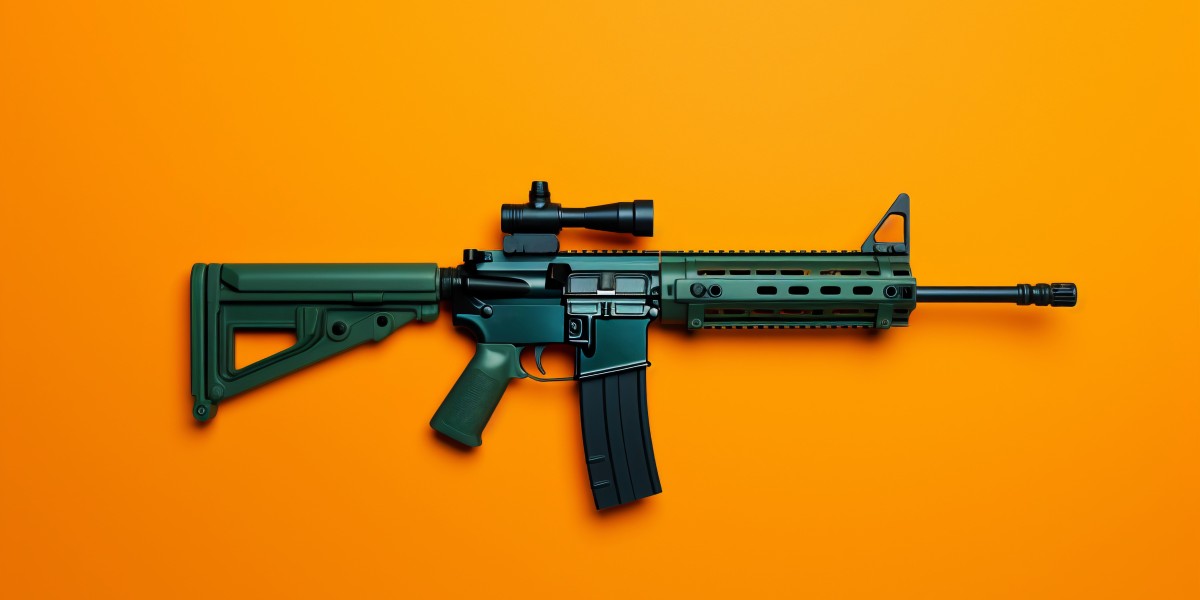The Savage 99 rifle holds a special place in firearm history. Known for its innovative rotary magazine, sleek lever-action design, and forward-thinking engineering, it remains a collector’s favorite and a capable hunting rifle. However, age, use, and wear can introduce mechanical issues that potential buyers should watch for—especially when considering listings for a savage 99 for sale. Understanding how to evaluate these rifles before purchase can help ensure you’re investing in a reliable piece of history rather than a costly repair project.
A brief history of the Savage 99
Before diving into common problems, it’s helpful to recall why the Savage 99 became so iconic. Designed by Arthur Savage and first introduced in the late 19th century, the Model 1899 (later renamed the Model 99) brought innovation to lever-action rifles. It was among the first lever guns to eliminate the traditional tubular magazine, replacing it with a rotary spool magazine that could safely handle pointed bullets. This design, combined with a solid receiver and robust lever mechanism, made it one of the most advanced rifles of its time.
Over decades of production, the Savage 99 appeared in many variants and calibers. Collectors and shooters alike prize it for its accuracy, classic aesthetics, and mechanical ingenuity. But with most examples now being vintage, buyers evaluating a savage 99 for sale should pay attention to certain recurring mechanical and wear-related issues.
1. The lever mechanism and locking system
The lever mechanism is the heart of the Savage 99’s operation. It cycles rounds, cocks the internal hammer, and locks the bolt. With age and heavy use, these moving parts can loosen or wear down.
Common symptoms include:
Excessive play or wobble in the lever when closed.
Failure of the lever to lock tightly against the receiver.
Difficulty cycling the action or “grittiness” when opening or closing.
A loose lever may point to worn linkage pins or a weakened locking bolt. The 99’s unique camming surfaces can also wear unevenly, especially if the rifle has been repeatedly forced closed or fired with dirty internals. When inspecting a savage 99 for sale, cycle the action several times and note whether it locks up solidly. Smooth motion and consistent lockup are signs of good mechanical health.
2. The rotary magazine system
One of the defining features of the Savage 99 is its internal rotary magazine. The magazine’s spool and spring system feed rounds upward in a circular motion—a brilliant design that allowed the rifle to handle spitzer bullets safely. However, after decades of use or neglect, this system can develop problems.
Potential issues include:
Weak or broken magazine springs.
Feeding failures or misalignment between the magazine and chamber.
Damage to the rotor or the small retaining pins.
If the rifle fails to chamber rounds smoothly, the rotary magazine might be out of timing or its spring may be fatigued. While some components can be replaced, original parts can be difficult to source, especially for older models. Therefore, when inspecting any savage 99 for sale, remove the magazine plate (if safe and allowed), check for spring tension, and verify that the rotor moves freely and consistently.
3. Firing pin and striker wear
Inside the receiver, the firing pin and striker assembly are responsible for consistent ignition. These parts can suffer from wear, corrosion, or improper cleaning over time.
Symptoms to look for:
Light primer strikes or misfires.
Inconsistent firing pin indentation on spent primers.
Delayed ignition (hang fires) due to weak spring tension.
Inspecting this area requires careful disassembly, but even without tearing the rifle down, light strikes or unreliable ignition during testing can signal a worn or dirty striker channel. If you are reviewing a savage 99 for sale listing online, ask the seller about the firing pin and whether it has been replaced or serviced recently. Replacement parts are available but often require fitting by a qualified gunsmith.
4. Safety and trigger mechanism issues
The safety and trigger assembly of the Savage 99 have evolved over the years, with variations including tang-mounted and lever-mounted safeties. These mechanisms can gum up with oil residue, rust, or old grease.
Common warning signs include:
A sticky or immovable safety.
Unintended discharges when the safety is disengaged.
A trigger pull that feels spongy or inconsistent.
Old lubrication and wear in the sear surfaces can create unsafe conditions. If the safety feels stiff or the trigger is unpredictable, these components may need cleaning or refitting. For anyone looking at a savage 99 for sale, this should be a high-priority inspection area, as malfunctioning safeties directly impact firearm safety.
5. Ejector and extractor malfunctions
Ejection and extraction depend on two small but critical components: the extractor claw and the spring-loaded ejector. Over years of firing, brass residues and carbon build-up can weaken spring tension or dull the extractor’s grip.
Symptoms of these issues include:
Spent casings failing to eject or remaining partially chambered.
The extractor slipping over the rim of the cartridge.
Ejection that is weak or inconsistent.
While some extractor and ejector parts can still be found from aftermarket suppliers, original Savage parts may require careful fitting. During a hands-on inspection of a savage 99 for sale, test extraction by cycling empty cases. Smooth, consistent ejection indicates a healthy mechanism.
6. Headspace and chamber wear
With any older firearm, headspace should always be checked. Headspace refers to the distance between the bolt face and the cartridge base when chambered. Excessive headspace can result from years of firing, poor maintenance, or even improper bolt replacement.
Signs of excessive headspace may include:
Split or bulged brass after firing.
Difficulty closing the action on live rounds.
Light primer strikes due to insufficient chamber support.
If you’re seriously considering a vintage savage 99 for sale, it’s worth having a gunsmith measure headspace with gauges before finalizing the deal. Repairing excessive headspace can be complex and expensive.
7. Cracks in the stock and receiver tang area
While technically not a “mechanical” issue, cracks in the stock—especially near the receiver tang—are common on older Savage 99 rifles. The tang area absorbs significant stress each time the rifle is fired. Over-tightened screws, recoil, or oil saturation in the wood can lead to splitting.
Check for hairline cracks running parallel to the tang or small separations around the receiver inlet. While minor cosmetic cracks can be stabilized with epoxy, structural splits may affect accuracy and safety. Inspect all wooden surfaces on any savage 99 for sale, particularly the wrist and tang area.
8. Bolt and carrier alignment
The Savage 99’s bolt locks directly into the receiver and must align perfectly to ensure smooth operation and safe chambering. Misalignment can occur if parts are worn or replaced incorrectly.
Symptoms may include:
Difficulty closing the bolt.
Uneven wear patterns on bolt lugs.
Failure to go fully into battery.
Such issues usually stem from a mismatched bolt assembly or worn locking recesses. If a rifle’s serial numbers on the bolt and receiver don’t match, inquire further before buying that savage 99 for sale, as mismatched components can affect safety and value.
9. Barrel condition and rifling wear
Like any firearm, barrel condition directly affects performance. Many Savage 99 rifles were carried for decades in the field and may show corrosion, pitting, or erosion near the throat.
Inspect the bore with a light—look for crisp rifling and minimal rust. A dull, dark, or frosted bore indicates wear. A rifle that looks pristine externally may still hide internal corrosion, so always request close-up photos or in-person inspection when evaluating a savage 99 for sale.
10. Internal lubrication and maintenance history
Decades-old rifles often carry decades-old lubricants. Dried oils, varnished residues, and dust can cause sluggish movement or even seize internal parts. Before assuming mechanical failure, many Savage 99 rifles simply need thorough cleaning.
Ask sellers about the rifle’s maintenance history. A well-maintained gun will have clean, lightly oiled internals, while one that’s sat in a closet for decades might need deep servicing. Don’t overlook this step when buying a savage 99 for sale, as poor maintenance is one of the biggest culprits behind apparent malfunctions.
Evaluating listings and asking the right questions
When shopping online for a savage 99 for sale, detailed photos are your best friend. Request images of:
The lever and locking area (both open and closed).
The bore and chamber.
The tang and stock interface.
The bolt face and extractor.
Also, ask sellers about the rifle’s history: was it recently fired? Has the action been cleaned? Has it been inspected by a gunsmith? A legitimate seller will have no problem providing this information.
When repairs are worth it—and when they’re not
The Savage 99 is an heirloom-quality firearm, and restoring one can be deeply rewarding. However, replacement parts are becoming scarce, and some repairs—especially those involving headspace, the rotary magazine, or the lever lockup—may exceed the rifle’s resale value. For collectors, originality often outweighs cosmetic condition, so think carefully before commissioning major repairs on an antique example.
If you find a mechanically sound rifle, small issues like a cracked stock or worn bluing can be handled affordably. But if you encounter deep mechanical wear, mismatched parts, or excessive headspace, you may want to keep searching for a better savage 99 for sale.
Conclusion
The Savage 99 is a legendary firearm that blends craftsmanship with mechanical innovation. Yet, because most examples are now decades old, careful inspection is crucial before purchasing. Understanding the common issues—lever wear, rotary magazine timing, firing pin fatigue, or stock cracking—helps you separate a collectible gem from a costly fixer-upper. Whether you’re a hunter, collector, or enthusiast, knowing what to look for ensures your investment pays off. And when you finally find the right savage 99 for sale, you’ll appreciate it even more for its enduring design and heritage. To responsibly trade, always verify legality, safety, and proper transfer through licensed channels whenever you buy or sell guns.






